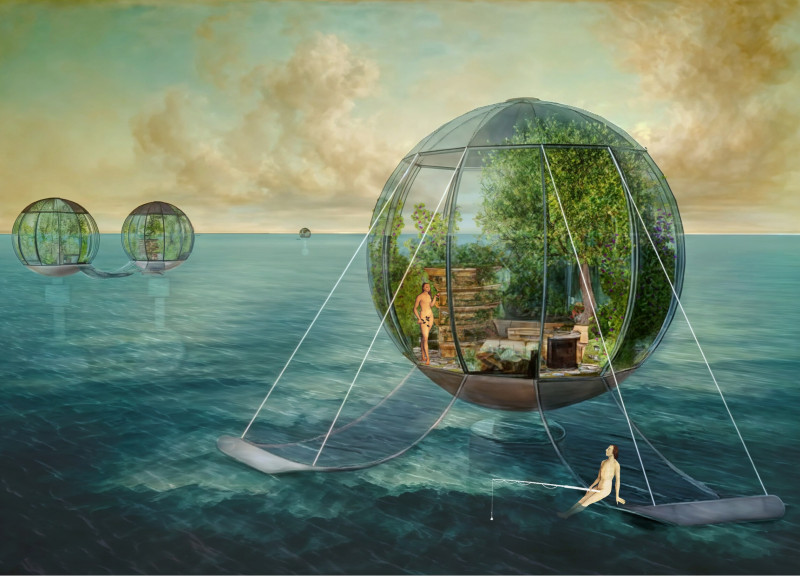5 key facts about this project
This project represents a modern interpretation of traditional architectural principles, embodying a dialogue between functionality and innovative design. The structure serves multiple purposes, accommodating diverse activities and fostering a sense of belonging. It is designed to house public spaces that encourage social interaction, alongside private areas that provide a retreat for individual reflection. This balance of communal and private space is vital to the project's overall function, ensuring that it meets the varied needs of its occupants.
A careful examination of the important details reveals a meticulous attention to design elements that enhance both usability and visual appeal. The façade utilizes a combination of materials, including concrete, glass, and wood, creating a dynamic interplay between solidity and transparency. The concrete provides structural integrity, while expansive glass surfaces allow natural light to flood the interior, blurring the boundaries between the indoor and outdoor environments. The use of wood adds warmth, establishing a welcoming atmosphere that counters the sterility often associated with urban architecture.
Among the unique design approaches employed in this project is the extensive use of sustainable practices. The architects have incorporated energy-efficient systems that minimize environmental impact, such as solar panels and rainwater harvesting systems. These elements not only serve functional purposes but also reflect a broader commitment to sustainability in architecture. The careful selection of materials extends beyond aesthetics, emphasizing durability and adaptability to the local climate, thereby enhancing the building's long-term viability.
The spatial organization within the building is another notable aspect of the design. Open floor plans encourage fluid movement between different areas, while strategically placed walls and partitions provide necessary privacy and acoustic buffering. This layout promotes a sense of community by facilitating gatherings in shared spaces, while also recognizing the need for quiet zones where individuals can retreat without distraction.
Landscaping plays a critical role in enhancing the project’s overall impact. The integration of green spaces, including gardens and terraces, enhances the building's connection to nature and offers a refuge from the urban environment. These outdoor areas are carefully designed to be accessible, inviting occupants to engage with their surroundings, thereby promoting a healthy lifestyle and fostering a sense of well-being.
The project serves as an example of how architecture can respond to the complexities of modern living while maintaining a strong connection to the local context. Each design choice reflects a deliberate effort to balance pragmatism with aesthetic values, creating an inviting space that encourages diversity in activity and interaction. The result is a cohesive architectural narrative that speaks to the needs of both its users and the community as a whole.
For those interested in delving deeper into the intricacies of this architectural design, exploring the project presentation will provide additional insights into the architectural plans, sections, and various design aspects that embody this thoughtful approach. Understanding these elements will offer a fuller appreciation of the project's significance and its contribution to contemporary architectural discourse.


























